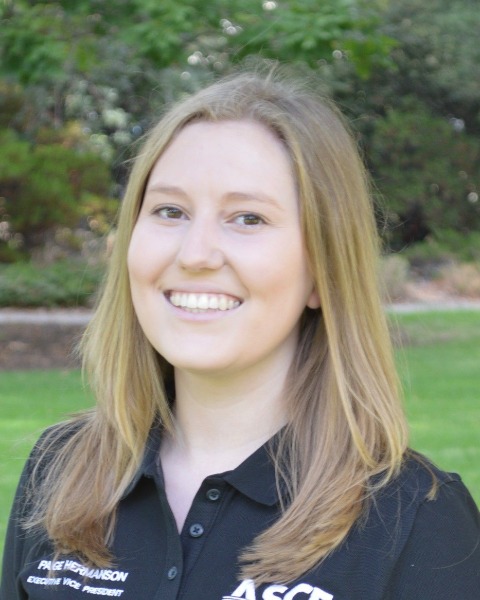Technical Session Proposal
Digestion to Dewatering Biosolids
Net Zero versus Nutrients: Understanding the Impacts of Co-digestion Waste on Your Facility’s Performance
Wednesday, April 10, 2024
2:25 PM - 3:15 PM
Location: A5-A6

Maxwell Armenta (he/him/his)
Associate
Brown and Caldwell
San Francisco, CA
Paige Hermanson (she/her/hers)
Water/Wastewater Engineer
HDR Engineering
Folsom, CA
Lead Presenter(s)
Track Lead(s)
Presentation Description: Water resource recovery facilities (WRRFs) throughout California have implemented high-strength waste (HSW) receiving programs with success. These programs facilitate receiving of trucked waste. Facilities receive revenue from tipping fees and cost savings through beneficial use of additional biogas production. The introduction of Senate Bill 1383 mandated a reduction of organic waste from landfills. This prompted more facilities to consider co-digestion of food waste slurry in addition to Fats, Oils, and Grease (FOG) and other HSW types. Until now, the primary concern for facilities interested in implementing a HSW receiving program was whether the economics were viable; however, facilities with HSW increase the nutrient loading to their liquid treatment process and upcoming nutrient limitations on final effluent discharge is a new concern for facilities.
An investigation was conducted using HSW characteristic data from over a decade of published peer-reviewed reports and project experience. This investigation used process simulations (BioWin and SUMO) to evaluate full-plant impacts from HSW receiving. Addition of FOG, food wastes, poultry blood, cheese waste, and dairy waste were simulated. The HSW quantity was varied to demonstrate relative impact on digestion performance (HRT, VSR, biogas), biosolids production, biosolids quality (N and P content), return stream characteristics (e.g., ammonia concentration), and aeration demand. Full-plant data from facilities with co-digestion are used to compare real world experience against model predictions, and additional data from more facilities is being gathered.
This presentation will provide background on the range of process impacts that can occur from receiving HSW. Simulation methodology and results will be presented while engaging the audience with quizzes and discussion. Finally, data from WRRF(s) from before and after co-digestion was implemented will be presented to validate simulation results.
The material in this presentation will provide value to anyone involved with the planning of a new co-digestion program because the results of this investigation will help them understand how different HSW types can impact their biogas, biosolids, aeration, and final effluent. Simulation results provide insight for decision makers and operators to understand which waste types are most advantageous to receive depending on their configuration, capacity, and permit limitations.
An investigation was conducted using HSW characteristic data from over a decade of published peer-reviewed reports and project experience. This investigation used process simulations (BioWin and SUMO) to evaluate full-plant impacts from HSW receiving. Addition of FOG, food wastes, poultry blood, cheese waste, and dairy waste were simulated. The HSW quantity was varied to demonstrate relative impact on digestion performance (HRT, VSR, biogas), biosolids production, biosolids quality (N and P content), return stream characteristics (e.g., ammonia concentration), and aeration demand. Full-plant data from facilities with co-digestion are used to compare real world experience against model predictions, and additional data from more facilities is being gathered.
This presentation will provide background on the range of process impacts that can occur from receiving HSW. Simulation methodology and results will be presented while engaging the audience with quizzes and discussion. Finally, data from WRRF(s) from before and after co-digestion was implemented will be presented to validate simulation results.
The material in this presentation will provide value to anyone involved with the planning of a new co-digestion program because the results of this investigation will help them understand how different HSW types can impact their biogas, biosolids, aeration, and final effluent. Simulation results provide insight for decision makers and operators to understand which waste types are most advantageous to receive depending on their configuration, capacity, and permit limitations.
Learning Objectives:
- Upon completion, participants will be able to list solids and liquid treatment process impacts that can occur from receiving additional HSW.
- Upon completion, participants will be able to describe differences between the impacts of different HSW types (such as FOG versus food waste).
- Upon completion, participants will be able to define a list of full-plant performance calculations and capacity checks that are important to consider before accepting HSW.

